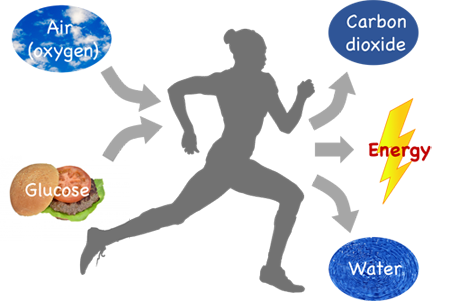
RESPIRATION IN EXERCISE
Oxygen Consumption and Pulmonary Ventilation in Exercise.
Normal oxygen consumption for a young man at rest is about 250 ml/min.the maximal breathing capacity is about 50 percent greater than the actual pulmonary ventilation during maximal exercise. This provides an element of safety for athletes, giving them extra ventilation that can be called on in such conditions as (1) exercise at high altitudes, (2) exercise under very hot conditions, and (3) abnormalities in the respiratory SYSTEM.
Oxygen-Diffusing Capacity of Athletes.
The oxygen diffusing capacity is a measure of the rate at which oxygen can diffuse from the pulmonary alveoli into the blood. This is expressed in terms of milliliters of oxygen that will diffuse each minute for each millimeter of mercury difference between alveolar partial pressure of oxygen and
pulmonary blood oxygen pressure. That is, if the partial pressure of oxygen in the alveoli is 91 mm Hg and the oxygen pressure in the blood is 90 mm Hg, the amount of oxygen that diffuses through the respiratory membrane each minute is equal to the diffusing capacity.
.Effect of Smoking on Pulmonary Ventilation in
Exercise.
It is widely known that smoking can decrease an athlete’s “wind.” This is true for many reasons. First, one effect of nicotine is constriction of the terminal bronchioles of the lungs, which increases the resistance of airflow into and out of the lungs. Second, the irritating effects of the smoke itself as some swelling of the epithelial linings. Third, nicotine paralyzes the cilia on the surfaces of the respiratory epithelial cells that normally beat continuously to remove excess fluids and foreign particles from the respiratory passageways. As a result, much debris accumulates in the passageways and adds further to the difficulty of breathing. Putting all these factors together, even a light smoker often feels respiratory strain during maximal exercise, and the level of performance may be reduced.



